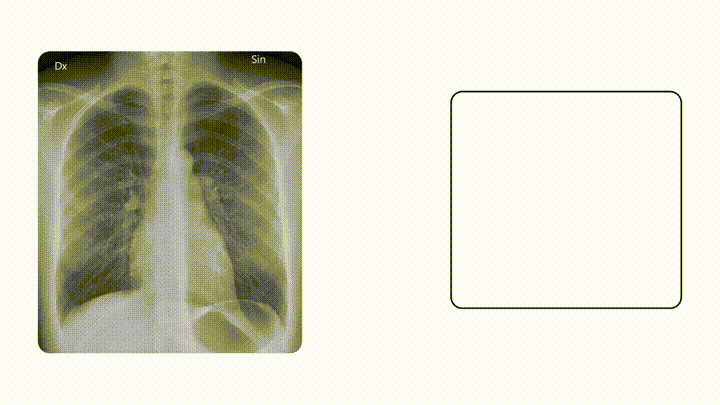Leveraging AI for X-ray Interpretation: An In-depth Look

Introduction
The landscape of medical diagnostics is rapidly transforming with the advent of Artificial Intelligence (AI). Among the myriad of applications, AI's role in interpreting X-rays stands as a beacon of innovation. This guide offers a detailed exploration into AI-powered X-ray interpretation, featuring platforms like X-ray Interpreter and ChatGPT Plus.
Embracing AI for X-ray Interpretation
AI's potential in X-ray interpretation is remarkable, marking a new era in AI in Radiology and AI Diagnostic Imaging. It offers the promise of fast, accurate, and automated analysis, which is crucial in timely diagnosis and treatment. This section delves into the core advantages of utilizing AI for X-ray interpretation.

Advantages of AI in X-ray Interpretation
- Speed & Efficiency: AI can process and analyze X-rays in a fraction of the time it takes for a human radiologist, embodying the essence of Automated X-ray Interpretation.
- Accuracy: With continuous learning and training on diverse datasets, AI models can achieve a high level of accuracy in identifying pathologies, showcasing the power of Deep Learning X-ray Interpretation.
- Accessibility: AI-powered platforms provide remote and instant analysis, making X-ray interpretation accessible even in resource-limited settings, a leap in AI-enhanced Radiology.
- Support to Radiologists: AI acts as a second pair of eyes, aiding radiologists in diagnosis, especially in complex or ambiguous cases, marking the advancement in AI Radiology Platforms.
Platforms Facilitating AI-powered X-ray Interpretation
1. X-ray Interpreter
X-ray Interpreter stands as a robust platform offering AI-powered X-ray analysis. Its user-friendly interface and accurate AI-driven reports make it a preferred choice among healthcare providers for Intelligent X-ray Analysis:
- Registration: A simple sign-up process to access AI-driven analysis.
- Uploading X-rays: Easy upload feature for X-ray images.
- Reviewing Interpretation: AI-generated interpretation is available for review and download, providing a seamless experience for users.
- Seeking Professional Advice: The platform also facilitates consultations with medical professionals for a better understanding of the interpretation.
Explore our user guide for a smooth start.
2. ChatGPT Plus
ChatGPT Plus, with its GPT-4V model, offers an interactive platform for insightful X-ray analysis. Here's how it works:
- Subscription: A subscription to ChatGPT Plus unlocks access to GPT-4V for image analysis.
- Uploading X-rays: A straightforward process to upload X-ray images on the OpenAI platform.
- Requesting Analysis: Engage with the AI using natural language commands to obtain analysis.
- Reviewing and Confirming Analysis: Review, refine, and confirm the analysis to meet your requirements.
- Consulting Professionals: It's always advisable to consult with medical professionals to validate AI-generated analysis.
Delve deeper with our tutorial post on utilizing ChatGPT Plus for X-ray analysis.
AI vs Traditional Diagnostic Methods: A Comparative Insight
The integration of AI in X-ray interpretation is not without its debates. While AI offers speed and automation, traditional diagnostic methods provide a human touch, expertise, and nuanced understanding. This section provides a comparative insight into AI-powered and traditional methods of X-ray interpretation, evaluating Automated Radiographic Interpretation against conventional diagnostics.
| Criteria | AI-powered Interpretation | Traditional Diagnostic Methods |
|---|---|---|
| Speed | Fast | Slow to Moderate |
| Accuracy | High (With Quality Data) | Varies (Skill-dependent) |
| Cost | Varies | Free (Excluding Educational Costs) |
| Accessibility | High | Moderate |
| Learning Curve | Low to Moderate | High |
| Human Interaction | Low | High |
Conclusion
The fusion of AI and X-ray interpretation opens new avenues in medical diagnostics, marking a significant stride in AI Medical Imaging Technology. Platforms like X-ray Interpreter and ChatGPT Plus are at the forefront, offering rapid, accurate, and accessible X-ray analysis. However, the importance of traditional diagnostic methods and human expertise remains unchallenged.
While AI serves as an excellent support tool, the final word in medical diagnosis rests with qualified healthcare professionals. As the technology matures, the collaboration between AI and human expertise is bound to create a robust diagnostic framework, enhancing patient care and clinical outcomes.
Resources and Further Learning
For those interested in delving deeper into the realm of X-ray interpretation using AI, a wealth of resources is available online. Whether you are a seasoned professional looking to refresh your knowledge or a student eager to learn, these resources offer invaluable insights and structured approaches to interpreting X-rays:
-
How Good Is That AI-Penned Radiology Report? (Harvard Medical School): This page discusses how AI tools can ease radiologists' workload by providing detailed narrative reports of patients' CT scans or X-rays.
-
An updated look at the use of AI in radiology (Radiology Business): The article explains how AI tools can flag mobile X-ray studies for immediate reading or alert the radiology tech for acute conditions like pneumothorax, plural fusion, or rib fractures, enhancing the radiography workflow.
-
AI in X-ray Analysis: Benefits & Challenges in 2023 (AIMultiple): This page discusses the commonality of X-ray imaging and how AI is poised to impact radiology by analyzing and reporting X-ray results, addressing the burnout reported by 45% of radiologists due to the rising volume of scans.
-
Artificial Intelligence That Reads Chest X-Rays Is Approved by FDA (UCSF): The U.S. FDA approved an AI algorithm that works with portable X-rays to rapidly screen for collapsed lung, showcasing a collaboration between GE Healthcare and UC San Francisco researchers.
These resources cater to different levels of expertise and provide varied approaches to X-ray interpretation using AI, aiding in the enhancement of your skills and understanding in this critical aspect of medical diagnostics.